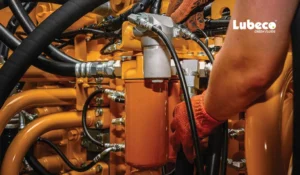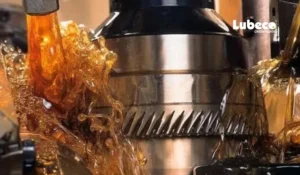Introduction to Industrial Paint Strippers
Industrial paint, a stalwart defender against corrosion and wear, plays a vital role in preserving the integrity of machinery, equipment, and structures. However, when the time comes for a fresh start or a change in aesthetics, stripping industrial paint becomes a necessary challenge. In this comprehensive guide, we’ll delve into the various methods and techniques employed by professionals to strip industrial paint efficiently. Whether you’re a seasoned expert or a DIY enthusiast, these insights will empower you to tackle the task with confidence.
Understanding the Basics of Paint Strippers:
Before diving into the techniques, it’s essential to comprehend the types of industrial paint commonly used. From epoxy and polyurethane to enamel and latex, each paint demands a tailored approach for effective removal. Analyzing the composition of the existing paint is crucial to choose the appropriate stripping method without causing damage to the substrate beneath.
Mechanical Methods of Stripping Industrial Paints
Sanding
Sanding is a traditional but effective method for removing industrial paint. By using sandpaper or sanding machines, you can physically abrade the paint until it’s smooth. This method is suitable for smaller surfaces and areas with thin layers of paint. However, it can be time-consuming and generate a significant amount of dust.
Abrasive Blasting
Abrasive blasting involves using high-pressure air or water to propel abrasive materials against the painted surface. Common abrasives include sand, walnut shells, or soda. This method is highly efficient for large surfaces and intricate details, making it a favorite in industrial settings. Ensure proper safety measures are in place, including protective gear and containment systems to manage debris.
Chemical Methods of Stripping Industrial Paints
Solvent-Based Strippers
Solvent-based paint strippers use chemicals to break down the paint, making it easier to scrape or wash away. These are effective for thick layers of paint and are available in gel or liquid forms. It’s crucial to choose a stripper compatible with the type of paint you’re dealing with and follow safety guidelines rigorously.
Caustic-Based Strippers
Caustic-based strippers work by breaking the chemical bonds in the paint. They are effective for various types of paint but require careful handling due to their corrosive nature. Protective equipment, adequate ventilation, and adherence to safety instructions are paramount when using caustic-based strippers.
Heat-Based Methods of Stripping Industrial Paints
Hot Air Guns
Applying heat to the painted surface softens the paint, making it easier to scrape off. Hot air guns are a popular choice for removing paint from metal surfaces. Caution is necessary to avoid overheating and damaging the substrate. Additionally, protective gear such as gloves and goggles should be worn.
Infrared Heating
Infrared heating systems emit heat that penetrates the paint layers, causing them to blister and lift. This method is efficient for large surfaces and works well with various paint types. As with other heat-based methods, safety precautions are essential to prevent accidents and injuries.
Combination Methods of Stripping Industrial Paints
For stubborn layers of industrial paint, combining methods can provide optimal results. For instance, a combination of abrasive blasting followed by a solvent-based stripper can tackle both thick layers and residual paint in intricate details.
Types of Chemical Paint Strippers for Industrial Use
Solvent-Based Industrial Paint Strippers
Advantages of Solvent-Based Paint Strippers
- Effective on various paint types, including epoxy, polyurethane, and enamel.
- Available in gel, liquid, or paste forms, offering flexibility in application.
- Fast-acting and suitable for both small and large surfaces.
Considerations while using Solvent-Based Paint Strippers
- Proper ventilation is crucial due to potentially harmful fumes.
- Protective gear, including gloves and goggles, is essential.
Caustic-Based Industrial Paint Strippers
Advantages of Caustic-Based Industrial Paint Strippers
- Effective on a wide range of paint types, including latex and oil-based paints.
- Suitable for removing paint from porous surfaces like wood.
- Generally less toxic than some solvent-based strippers.
Considerations while using Caustic-Based Industrial Paint Strippers
- Can be corrosive, requiring careful handling to prevent skin and eye irritation.
- Neutralizing the stripped surface is often necessary to deactivate residual caustic materials.
Bio-Based or Environmentally Friendly Industrial Paint Strippers
Advantages of Bio-Based or Environmentally Friendly Industrial Paint Strippers
- Low toxicity and reduced environmental impact.
- Suitable for various paint types, though effectiveness may vary.
- Pleasant or minimal odor compared to some traditional strippers.
Considerations while using Bio-Based or Environmentally Friendly Industrial Paint Strippers
- May require longer application times compared to more potent chemical strippers.
- Effectiveness can vary depending on the type and thickness of the paint.
N-Methyl-2-Pyrrolidone (NMP) Based Industrial Paint Strippers
Advantages of N-Methyl-2-Pyrrolidone (NMP) Based Industrial Paint Strippers
- High solvency makes it effective for challenging paint removal tasks.
- Suitable for both small and large surface areas.
- Can work at lower temperatures compared to some other solvents.
Considerations while using N-Methyl-2-Pyrrolidone (NMP) Based Industrial Paint Strippers
- NMP is a chemical that can pose health risks, and prolonged exposure should be avoided.
- Adequate ventilation and protective gear are essential when using NMP-based strippers.
Hydrogen Peroxide-Based Industrial Paint Strippers
Advantages of Hydrogen Peroxide-Based Industrial Paint Strippers
- Effective for lead-based paint removal.
- Generally less toxic than some other chemical strippers.
- May not produce as strong odors as some solvent-based options.
Considerations while using Hydrogen Peroxide-Based Industrial Paint Strippers
- Effectiveness can vary, and multiple applications may be necessary.
- Safety precautions, including protective gear, are still important.
Safety Precautions while Stripping Industrial Paints
Regardless of the chosen method, safety should always be a top priority. Here are some general safety tips to keep in mind:
- Wear appropriate personal protective equipment (PPE), including gloves, goggles, and respirators.
- Work in a well-ventilated area to minimize exposure to fumes and dust.
- Follow the manufacturer’s instructions for any chemical products or equipment used.
- Dispose of waste materials responsibly, adhering to local regulations.









